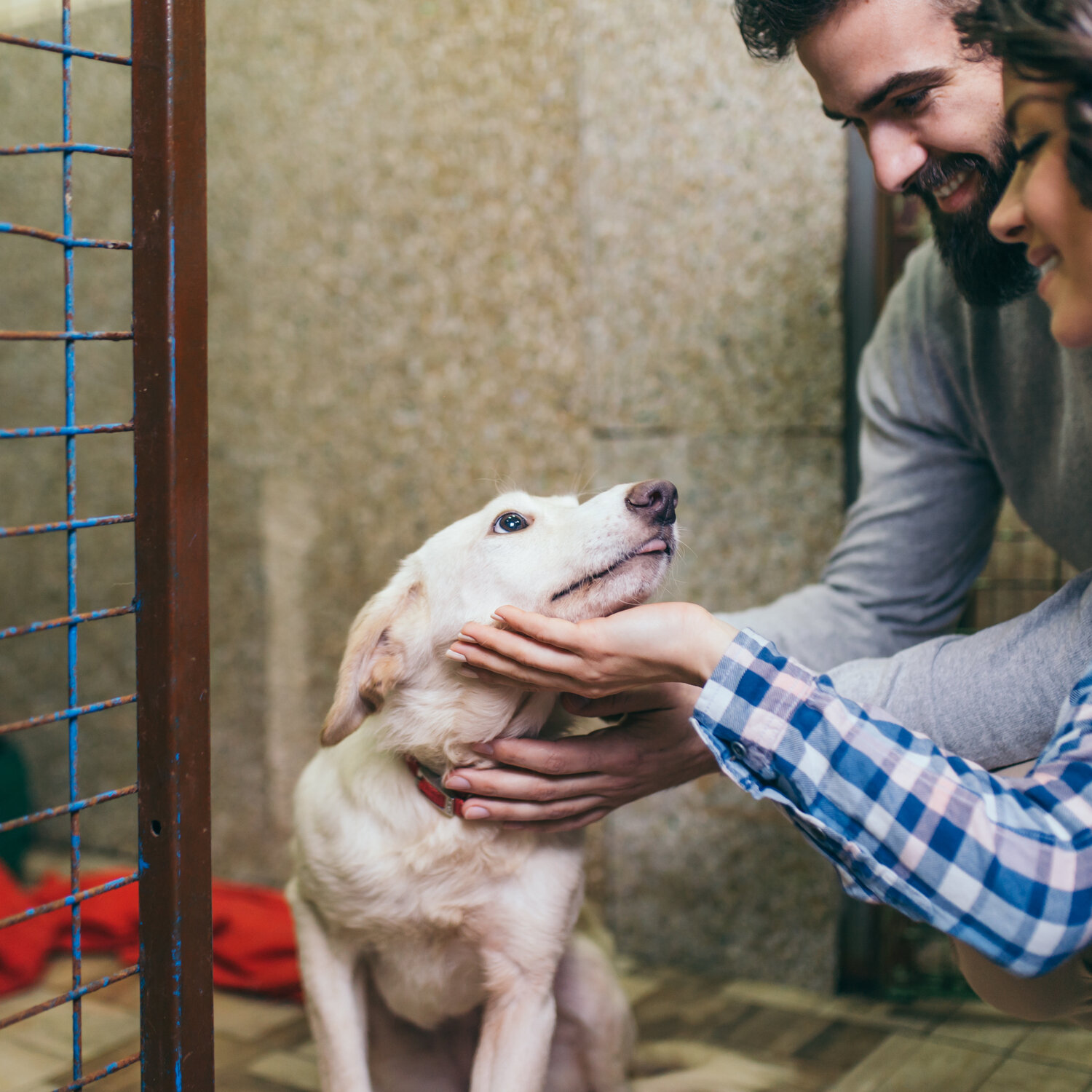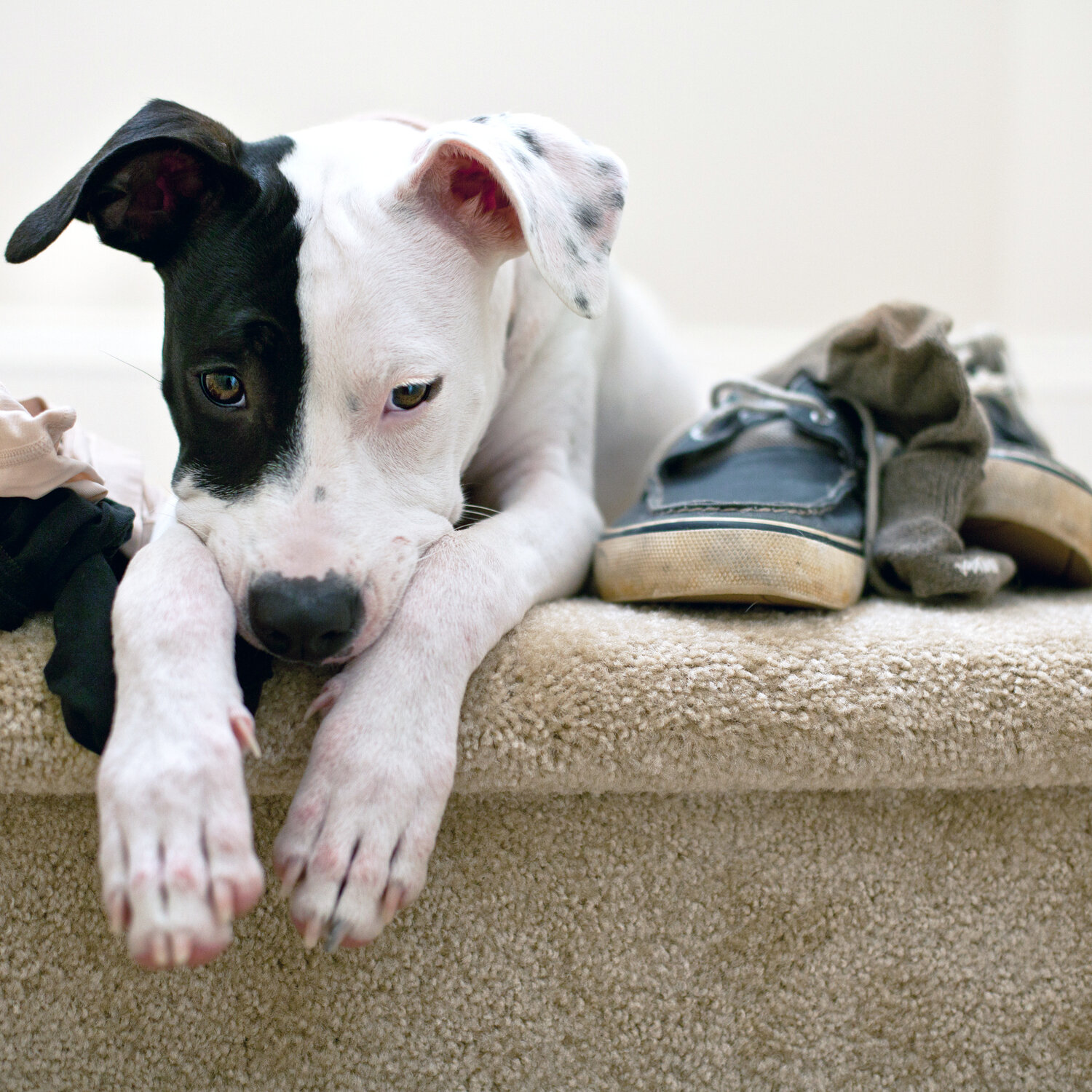So You Adopted A Dog Everything You Need To Know About the First 3 Months
If you stumbled on this article and haven’t adopted yet and are considering, check out this article first!
If you have adopted, then you’re in the right place. Adopting a dog is a very exciting time. You and your new furry friend are about to start the next chapter of your lives.
Yet, it is also a stressful time.
How do you become friends with your new dog?
How do both of you get used to your new routine?
The good news is that no matter how old your new pooch is or their history, there are a few key things you will want to do.
Within these guidelines, there is plenty of wiggle room to adjust your actions to your dog’s situation.
After all, you would not treat a young pup exactly like an older dog or a super-friendly one like one that is shy and scared from a less-than-stellar past.
However, once you have these guidelines down, you can adapt your actions to fit your new rescue.
The 3/3/3 Rule: What to Expect at 3 Days, 3 Weeks, and 3 Months
If you talk to someone who regularly finds dogs new home, they are likely to tell you about the 3/3/3 rule.
This is essentially a rule that helps guide what you can expect from your pooch and how you should behave within the first three days, three weeks, and three months.
The First Three Days
During the first three days after adopting your dog, you are still in your introductory period.
You cannot expect your new pup to be your best friend yet, as they will still feel overwhelmed and unsure about what is going on.
During this time, it is common for newly adopted dogs to be antisocial or even miss meals. There are also some dogs that do the opposite and try acting out in search of the limits.
We recommend letting your dog get to know you and don't take them on new adventures, like going out to eat, going to a friend's house, or overwhelming new situations.
Let them figure out their new normal before introducing those activities.
The First Three Weeks
After those first few days are over, the rest of the first three weeks are a period of settling in.
Your new companion is starting to feel more comfortable and is likely realizing that they are in your home to stay.
During this stage, expect your new pooch to start to show its personality and feel more confident in your space.
Keep your eyes out for potential behavior issues, as part of settling in and getting comfortable they may be challenging your authority.
The First Three Months
By the time the first three months come to a close, your adopted pooch should be comfortable in your home and with you.
You will have likely both built up a bond and be used to your new routine. At this point, neither of you may be able to imagine life without the other.
The 3 C’s Approach to Pet Adoption
While that 3/3/3/ rule is common, it has plenty of variations and does not always include specific “do’s” and “don’ts.”
To make it even clearer, we’ve taken the 3/3/3 rule a step further with what we call The 3 C’s Approach.
This approach makes it easy to remember what your new pup needs at various points in their journey with you by assigning a different “C” to each stage: comfort, care, and consistency.
Comfort
During the first three days after adopting your new dog, you want to focus on making the dog feel comfortable.
This is the time that you welcome your new pup and let them know they are a welcome part of the family.
Most of your actions during this period revolve around making sure the dog feels comfortable and is happy.
Do:
Let them explore outside first
Before you bring your new dog inside, give them some time to explore your yard and sniff the new smells.
If you have other dogs, introduce them to each other outside, ideally with a fence between them.
We encourage that the first interaction to be a walk together even if it is short, rather than a face-to-face meeting.
The outdoor tour should also include an introduction to where your dog will go potty.
Show them your home on a leash
The first time you bring your canine inside your home, keep them on a leash. This can take more than a day, however, take them off the leash when they are ready to hang out in the space you set up for them.
Set up a cozy, safe area
Ideally, this will mean putting your dog’s crate in a room that is less-frequented. Put comfortable blankets in the crate, leave the door open, and have food and water nearby, as well as toys.
Let your dog set the tone and be patient
If your dog doesn’t want to socialize, don’t force them to. If they do want to socialize, go ahead and encourage it, but let them retreat if they want.
Start a schedule if your dog is willing
If your new pooch is up for it, get them started on what their schedule will be. This can be as simple as filling up their food bowl at the same time in the case of more antisocial dogs.
If they are ready for walks with you, then start trying to follow a schedule with those, as well. It’s never too early to get a head start on consistency.
Take care of setup ahead of time
Ideally, you will take the time to set up your home for your new pup before you bring them home, so you can focus on helping them get comfortable for those first few days. This means doggy-proofing your house and getting everything you need, like a crate, leash, collar, food, bowls, toys, and blankets.
Don’t:
Force socialization or interactions
As mentioned, you want to let your dog set the pace, so it is comfortable for them. This means you should not force them to spend time with you unless they want to.
Let kids and pets in the safe space
You want your pup to view the cozy setup you made for them as their safe area that they are in control of. To avoid stressors, don’t let small children or other pets in there during the first three days.
Let visitors come over right away
To avoid overwhelming your new dog, try to keep your home calm, quiet, and in line with your new routine for the first days. No matter how excited you are to share your new pooch with friends and family, this would likely make them uncomfortable.
Care
Once your new dog knows they can expect to be comfortable around you, it is time to show them that you care.
Remember, during this stage, your new dog is learning more about their environment.
Therefore, you want to let them know that you will take care of them, but you also want to set the overall tone for the environment.
This is when it is very important to start setting clear boundaries.
As you begin this journey with your pup, we recommend you also check out Top Dog Tips for all things dogs as well.
Do:
Introduce them to other pets and kids
At this point, you can start introducing your dog to other members of the family, including other pets and kids. They should feel comfortable enough to deal with these minor changes and bits of excitement.
Take time to bond
It can take a while to form a strong bond with your pup, and every dog is different.
This will extend past the first three weeks and into the first three months, but it is good to start early, as long as your dog is comfortable with you.
Start training
This is about the right time to start training your new dog. Specifically, let them know what they are allowed to do in the house and what they cannot do.
Set boundaries for furniture or areas of the home that are off-limits, and reinforce them.
That training should also extend to teaching your dog basic commands, like sit and stay, if they don’t already know them.
Work with a trainer if necessary
Some dogs may start to have behavioral problems at this point, and if you don’t think you can handle them yourself, work with a professional trainer. They will use their expertise to help you get your pup on the right track.
Be consistent each day and make sure all family members participate
It will make the process longer and more frustrating, when you are determined to train your dog not to jump or beg, but you have family members allow it. It is important to not allow any leeway with this whatsoever. Make sure to prompt everyone so they are all on the same page no matter what.
Don’t:
Let them get away with things
Remember that your dog is starting to learn what they can and can’t do during this time. That means that if you don’t want them on the couch in the future, don’t let them on it at this point. Don’t use them being a new addition as an excuse. Your dog will learn the lessons you teach them at this point, and it will be harder to keep them off the couch in the future if you let them on now.
Consistency
Dogs thrive on routine, so you want to create and stick to a routine that works for both you and your pup.
This aspect of consistency is particularly important during those first three months, as it lets you set up your routine.
After the three months are over, you still want to maintain that consistency, but it becomes a little less crucial.
If your routine is off slightly once or twice, that should be fine. Just keep it as consistent as possible and maximize that consistency during the first three months.
Do:
Maintain consistency
Remember to be consistent with your pooch in the first three months and to keep it going after. Stick to a schedule for feeding, walking, and other activities.
Keep up with training
Continue to train your dog and reinforce their previous training. Build your bond with them by teaching them new skills or tricks.
Get them used to being alone
If you have not already started doing so, you should be leaving your dog alone for increasing periods of time during the day by the three-month mark. Work up to leaving them alone for a full workday, but start small, with just an hour or two of being gone. This will teach your pup that you will always come back.
Regularly socialize
Not all of your dog’s training is learning skills; some is also socialization. Ideally, you will have your furry friend interact with other animals regularly at this point. If they are not ready for that yet, then keep working on it.
Don’t:
Ignore potential problems
If your newly adopted dog still has any lingering behavioral or emotional issues, don’t ignore them and expect them to disappear on their own. Instead, hire a professional trainer to help you.
Let your dog backslide
Sometimes, rescue dogs will be doing great and learning the rules of the new home, then backslide. This can happen if they get too comfortable and forget you are in charge. If they start to backslide, correct the behavior.
Other Advice
In addition to following the 3 C’s approach, you will also want to keep other dog adoption advice in mind. These tips will supplement the 3 C’s and help you and your pup start off your relationship on the right paw.
Start with the same food they ate at the shelter. You should always ask the shelter what food your dog was eating before you adopted them. You want to give them this food for the first few days before slowly transitioning to what you will give them in the future. That transition reduces the stress on their digestive system.
Introduce the kids before going home. Before you bring your dog home for the first time, introduce them to your kids if you have any. During this process, they should be on a leash, and your children should sit down. This will be a calm introduction and give the pup more familiarity when they get home.
Set up an appointment with your vet. Hopefully, the rescue or shelter kept them in good health. Even with their best efforts, however, small issues can slip through the cracks. Make sure they’re in good health and take care of any vaccines soon after adopting your dog. Don’t forget to spay or neuter them, as well.
With your new knowledge, you should be ready to bring your new dog home with minimal adjustment problems.






